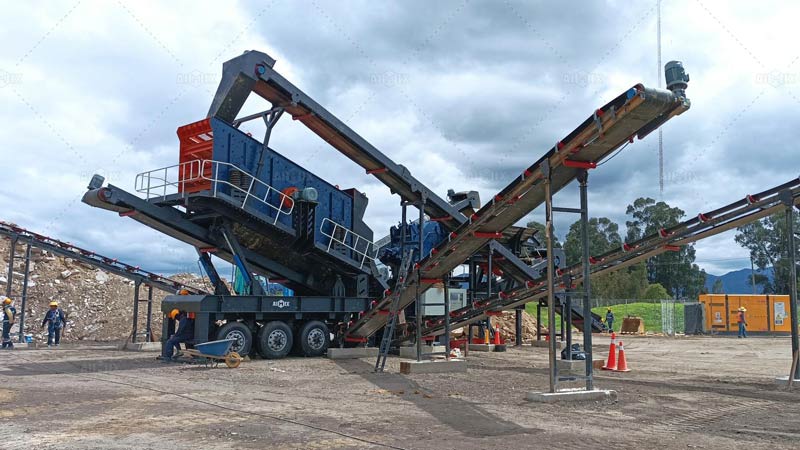In the modern mining and construction materials industry, safety and automation have become paramount. With increasing concerns around labor safety and operational risks, achieving "zero contact" operations is no longer just a vision—it’s becoming standard in advanced aggregate crusher plant setups. This blog will explore how these plants, especially modernized rock crushing systems, are incorporating smart technology and design to ensure safe, efficient, and contactless working environments.
Why "Zero Contact" Operation Is a Growing Necessity
Traditionally, workers needed to be physically close to crushers and screens to monitor, adjust, and maintain operations. This proximity often resulted in higher risks of injury due to equipment failure, flying debris, or human error. By integrating technologies that reduce or eliminate the need for direct human interaction with machinery, aggregate crusher plants(planta de agregados) significantly reduce potential hazards and improve overall workplace safety.
Key Features Supporting Safe, Contactless Operation
Remote Monitoring and Control Systems
Modern rock crusher systems are equipped with smart control panels and integrated remote operation software. Operators can monitor performance, adjust feed rates, and start or stop the machine from a safe distance. With cloud-connected dashboards, plant managers can even oversee multiple machines in real time using mobile devices or computers. This dramatically reduces the need for physical presence near dangerous equipment.
Automated Lubrication and Maintenance Alerts
Frequent lubrication and maintenance are crucial for optimal crusher function. Today’s debris crusher(maquina trituradora de escombro) designs include automated lubrication systems and sensors that trigger alerts for scheduled maintenance. This reduces the need for manual checks, which are not only time-consuming but also risky. Predictive maintenance systems also help avoid emergency breakdowns, thus lowering the likelihood of exposure to hazardous environments.
Enclosed Structures and Dust Suppression Systems
Dust from crushing activities poses respiratory risks and can impair visibility, increasing the chance of accidents. Aggregate plants are now using enclosed conveyors, water spray systems, and dust extraction units. These additions contribute to cleaner air and better visibility, ensuring operators can control systems safely from designated control rooms away from the machinery.
Advancements in Mobile Crushing for Safer Use
One of the biggest improvements in the industry is the rise of the mobile stone crusher. Unlike traditional fixed plants, mobile units are designed with safety-first principles. Their compact, modular layout makes it easier to install shields and barriers. In addition, mobile crushers often come with hydraulic folding mechanisms for hoppers and conveyors, minimizing the need for manual labor during setup and transport.
AI-Based Safety Protocols and Emergency Shutoffs
Artificial intelligence (AI) integration is beginning to play a role in safety. AI systems can detect anomalies like vibration spikes or irregular sound patterns and trigger automatic shutoffs. Emergency stop buttons are now placed at strategic remote locations and integrated into centralized control systems, allowing instant shutdowns in case of malfunction or danger.
Training Through Simulation
Another way to promote "zero contact" is through the use of virtual reality (VR) training simulations. Before entering the field, operators can learn how to interact with a rock crusher(trituradora de rocas) or aggregate crusher plant using digital simulations. This not only improves safety awareness but also builds familiarity with remote operation protocols before any hands-on work begins.
Conclusion: Moving Toward a Safer Future
The concept of "zero contact" operation is no longer futuristic—it is a necessity in today’s high-performance aggregate crusher plant environments. With advancements in automation, remote control, and AI-driven systems, crushers and supporting machinery can now be operated with minimal human involvement. As safety regulations become stricter and demand for construction aggregates continues to rise, the industry’s shift toward contactless, intelligent operations is set to become the new normal.
Whether you are upgrading an existing rock crusher or planning a new debris crusher installation, prioritizing safety through automation is a smart and forward-thinking investment.


Comments
No comments yet. Be the first to react!